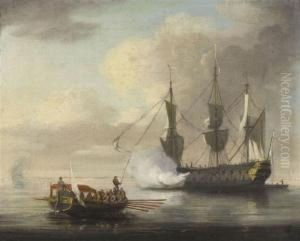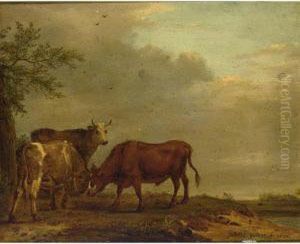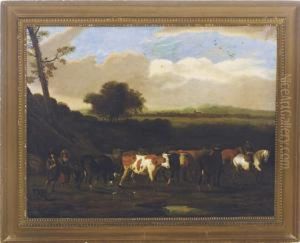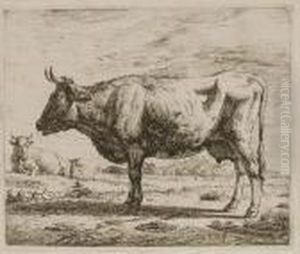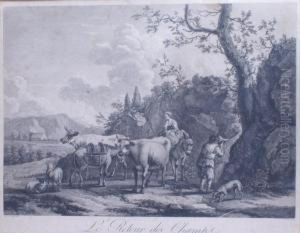Adriaen Van Den Velde Paintings
Adriaen van de Velde was a notable Dutch painter, draughtsman, and printmaker of the Dutch Golden Age. He is often considered one of the finest landscape and animal painters of the period. Born on November 30, 1636, in Amsterdam, he came from an artistic family; his father Willem van de Velde the Elder was a marine painter, and his brother, Willem van de Velde the Younger, became renowned for his seascapes.
Adriaen initially trained under his father and later with landscape painter Jan Wijnants. Despite this early influence, Adriaen developed a distinct style characterized by a harmonious fusion of landscape, animals, and figures, often bathed in a gentle, golden light. His works are known for their tranquil pastoral scenes and meticulous attention to detail, particularly in the rendering of animals and foliage.
Van de Velde was not just a painter but also a skilled draughtsman. His drawings served as studies for his paintings but were also highly regarded on their own. He had the ability to capture the essence of a scene with just a few well-placed lines and was adept at using different media, including pen, chalk, and watercolor.
Despite his relatively short life, Adriaen van de Velde produced an impressive body of work. His paintings were sought after during his lifetime and were collected by influential patrons, including the burgomasters of Amsterdam and the Stadtholder, William III of Orange.
Adriaen van de Velde died on January 21, 1672, in Amsterdam, at the young age of 35. The cause of his early death is not well documented, but his legacy continued through the influence of his works on later artists and the continued appreciation of his art. Today, his paintings can be found in major museums around the world, and he is celebrated for his ability to convey the peacefulness of the Dutch countryside.
